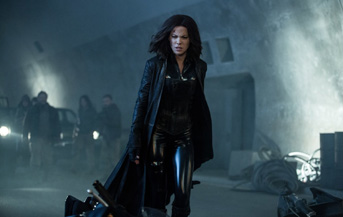|
|
Movie Review - Underworld: Blood WarsBy Ben GruchowJanuary 10, 2017
These things would be irrelevant to the experience were the movie cheerfully junky and pulpy, but no. Everything in this series is approached with the utmost gravitas, humorlessly grim, as if the filmmakers were producing a sobering historical adaptation, or a DCEU film. The Blade series lost its way by tilting too far toward snarky self-awareness; this is what it's like to see the opposite approach. We alternate between hectically-cut scenes of shaky-cam kineticism, the likes of which we've seen dozens or hundreds of times before, to scenes of ponderous expository dialogue, the likes of which we've also seen dozens or hundreds of times before. The accelerated narrative gives short shrift to all but the core two or three players; Theo James and Charles Dance make guest appearances, but their final scenes play like the editors made one cut too many in the name of brevity. It is not actively unpleasant to sit through, and it is cleanly told as an accelerated narrative; director Anna Foerster (the first woman to helm a minor hit series about a strong female protagonist) does not do anything new with the aesthetic, but the general shape of the story’s conflict and incident proceeds in a clear-eyed arc that's beyond anything the oppressively fussy first few entries were able to offer up. And the movie benefits from low expectations, which is a perk you get when you open your film on the first weekend in January. We are perhaps more forgiving toward junk cinema when it announces itself plainly. We are even more forgiving toward junk cinema when it’s enjoyable.
|

|
|
|

|
Friday, November 1, 2024
© 2024 Box Office Prophets, a division of One Of Us, Inc.


